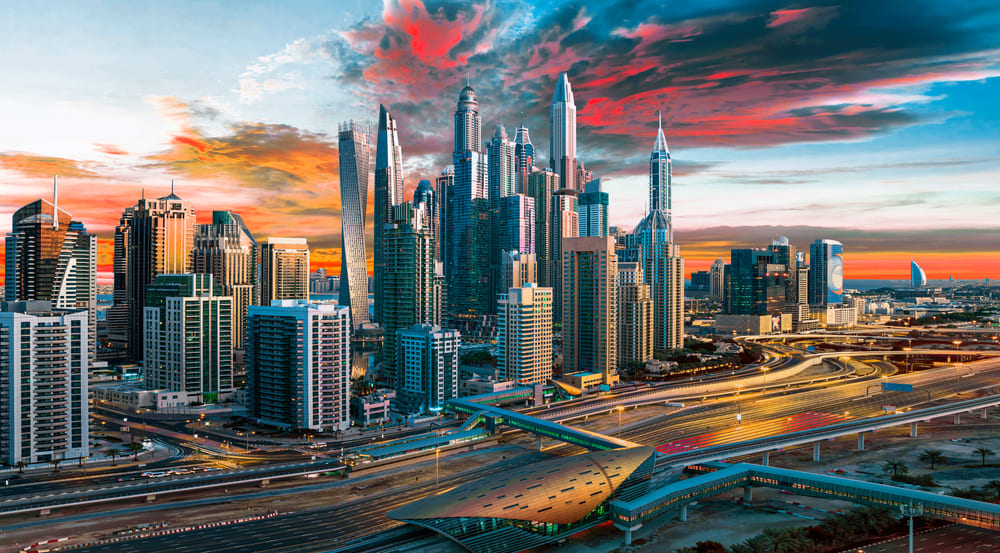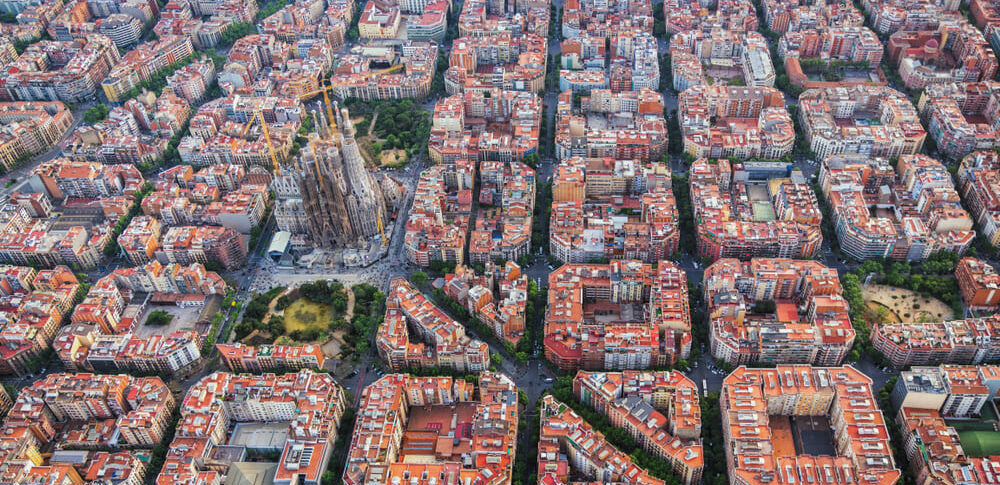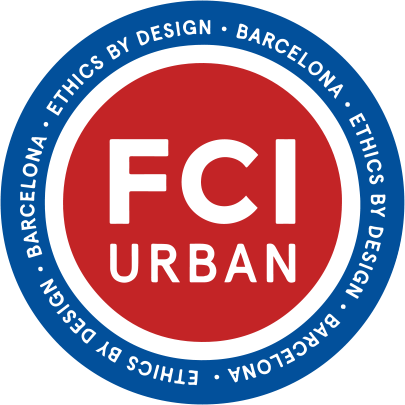One of the objectives of the development of new technologies is to promote sustainability in various social sectors. A Smart City takes advantage of these advances to be eco-friendly and make more responsible use of energy and resources. At first glance, it may seem like a host of ambiguous ideas, but the truth is that the implementation of smart cities is booming.
Summary
What is a Smart City?
The Smart Cities are, at present, a reality in many countries of Europe and other continents. They have arisen from a need to guide the activities of large cities towards a sustainable improvement in the quality of life of their inhabitants. Sustainable cities promote development and efficient consumption in all areas of operation: mobility, economy, organization and governance. All this is reflected in an increase in safety, comfort and quality of life.

For the objective of these types of cities to become a reality, it is necessary to make significant improvements in the urban and natural environment of the city. Efforts must also be concentrated on facilitating daily processes, on reducing and optimizing public spending and on offering real-time information that can be used in various fields, such as efficient transport or citizen participation.
Special emphasis is placed on environmental protection, through the use of clean energy or the construction of buildings that incorporate elements that promote efficient consumption. These technologies make it possible to convert buildings into self-sustaining elements, being capable of generating all the energy they need to function by themselves. In addition, other trends such as recycling or reuse are mixed with new technology to create trends in sustainable, intelligent and safe operation.
Features of a Smart City
.Many think that, for a Smart City to exist, it is necessary to create it from scratch. However this is not entirely true. It is a procedure that must be implemented step by step, generating changes in the system and in the processes to convert an ordinary city into a smart city. For this, it is crucial to meet certain requirements and needs.
A smart city must base its operation on the sustainable use of technology. This serves as the basis for collecting large amounts of data and information. These data must be managed in an intelligent way, which allows them to be shared in real time and give them added value.
The use of such data must be a means to an end, since it is not enough to have sensors or networks distributed throughout the city if this information does not have a practical and real use. Thus, the purpose will always be to improve the quality of life of the inhabitants. This improvement is, in turn, attractive for investors, visitors and to attract new talent.
The final objective of a sustainable city is to generate a global vision of the operation of the entire city, since new technologies have to be present in all areas of its activity.
Through the implementation of these technologies, it is possible to generate a new model of relationships, which opens more open and fluid communication systems between citizens and their different roles in the city organization: consumers, companies , visitors and institutions, among others, with which the connection with other smart cities is facilitated.
How does a smart city work?
For these cities to function, they need a transversal digital system. These systems provide the rulers of these spaces with holistic models that integrate services and vertical systems. Besides, these systems are divided depending on their functionalities:

Smart Economy. This model helps boost economic development and innovation in the city.
- Smart Living. It promotes the creation of neighborhoods and residential areas made up of smart houses, which improve home care and the comfort of its inhabitants.
Smart Environment. Through these models, energy and natural resources are optimized, promoting sustainability and the use of clean energy. These methods focus on protecting the environment.
Smart Mobility. It is in charge of building efficient and sustainable mobility and transportation systems.
Smart People. It focuses on citizen participation, making use of smart sensors.
Smart Governance. It helps to create digital systems that are more efficient for the inhabitants.
Benefits of Smart Cities
.This system of smart cities needs to articulate four fundamental pillars, which must coexist in harmony in order to provide solid foundations. These four pillars are the human aspect, the environment, the economy and the government. From these bases, a commitment must arise for the implementation of the constant improvements that the construction of a Smart City implies.
When there is a perfect correlation, communication and interaction of the agents involved in each of these pillars, the construction of the city becomes a process of sustainable modification over time that provides multiple advantages.
Efficiency
The first aspect in which a growing improvement is noticeable is in the efficiency of the city. All operations are carried out in modern and state-of-the-art facilities, which guarantee the efficiency of said movements. This is closely related to the evolution of our society towards the Internet of Things, IoT for short, which promotes the implementation of systems connected to each other or based on AI.
Connectivity
Such connectivity also offers advantages. It enables efficient integration and coordination of the various urban services on which the functioning of the city depends. In addition, it greatly facilitates decision-making, especially by government and institutional bodies.
Integration
The integrated services can be controlled and monitored, so that it is possible to improve mobility management, traffic or increase energy savings, among others. Urban planning and the city environment are also improved, increasing green and peripheral areas, as well as squares, pedestrian walkways, bicycle paths, etc.
Automation
The management of the city’s infrastructure is automated. The quality of the services offered to citizens can be monitored in real time, apart from being controlled. This reduces real estate, electrical and community expenses. In addition, waiting times for citizens and consumers in places such as health centers and municipal offices are reduced and optimized.
Must-know trends for Smart Cities
The authorities are not the only ones driving the growth of Smart Cities. Currently, citizens also demand to live in more efficient and sustainable urban environments. For this reason, many cities in the world are betting on the latest technological trends to implement sustainable city systems.

Municipal services
The garbage collection system is one of the systems that needs the most government funds to function. Thanks to studies focused on the analysis of the amount of waste generated by neighborhoods, containers can be designed that report in real time on their available capacity, so that the collection service is optimized. Efficient systems can also be designed in areas such as lighting or urban planning.
Cybersecurity
Due to the use of computer connection methods of sustainable cities, these systems can be targeted by cybercriminals. Therefore, everything related to cybersecurity is key in the development of these environments. Thus, those responsible for effective security policies must have the technical means and qualified personnel to protect the city’s computer system.
Traffic management
In order for intelligent traffic management to become a reality, solutions must be available that offer geographic data in real time: route history, average speeds and times, matrix of origin and destination of areas where there is greater activity or population data divided by neighborhoods. Thus, it is possible to design long-term mobility improvement plans and solve issues such as traffic jams or accidents.
Alternative mobility
Mobility is one of the greatest challenges of a intelligent city. It is necessary to take advantage of technologies and urban elements to develop new and efficient systems. The use of bicycles and prioritizing pedestrians are two alternatives to achieve this.
The so-called walkability refers to moving from massive use of the car to promoting pedestrian circulation in the urban area, creating infrastructures that facilitate mobility on foot. Thus, traffic, congestion and pollution caused by motor vehicles are reduced.
For the entire mobility system to be sustainable, infrastructure safety is a priority. Elements such as bollards and bollards take center stage, especially when it comes to ensuring the safety of pedestrians. At FCI Urban we understand that the bollard and the polyurethane bollard facilitate the adaptation of cities to the safe circulation of pedestrians or bicycles because they delimit lanes bicycle and pedestrian crossings effectively and with less risk for people in the event of an impact or accidental fall.
In addition, we highlight our presence at the Smart City World Congress showing how our products are adapted to the philosophy and operation of the Smart City.

